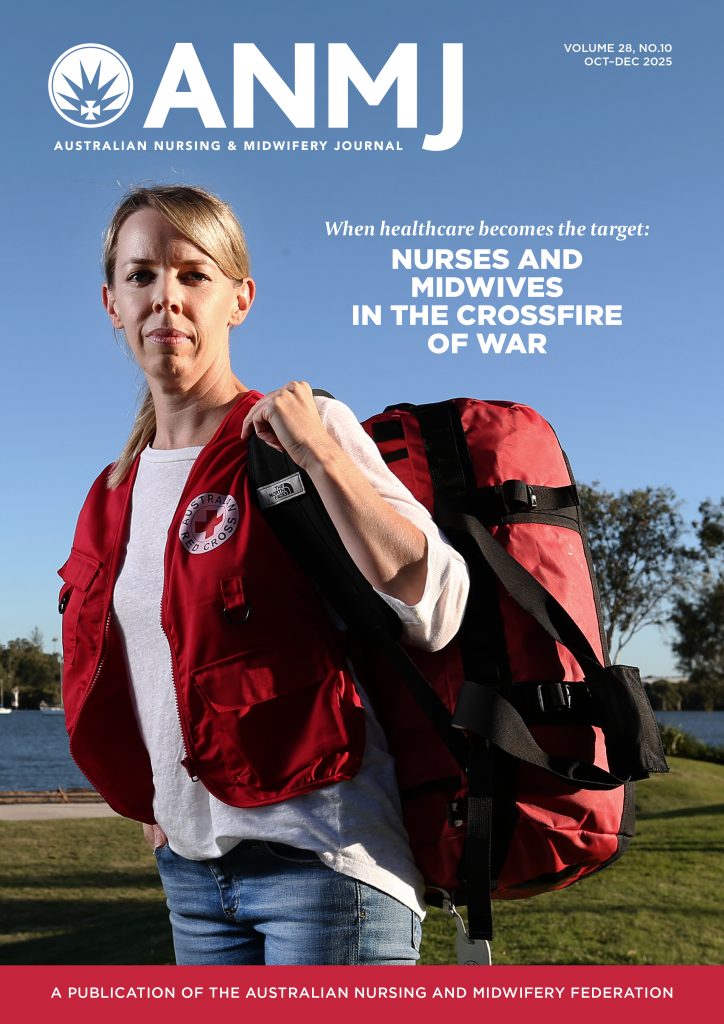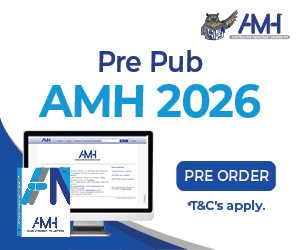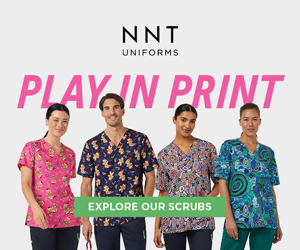Transgender (sometimes abbreviated as ‘trans’) is a term for people whose gender identity is different to the sex assigned to them at birth. Gender identity refers to a persons’ internal and personal concept of themselves as being male, female, a blend of both, or neither. There is a growing awareness of transgender people in our community and an increasing recognition of the importance of ensuring healthcare settings are inclusive and able to provide best practice care to all patients regardless of their gender.
The 2016 Australian census provided an option to nominate sex/gender as other than male or female. While only 1,260 valid non-binary responses were recorded, the Australian Bureau of Statistics recognised that the rate of 5.4 non-binary people per 100,000 is very likely to under represent the true number of gender diverse people in our community.1 This reflects both how up until recently, visibility and understanding of transgender people has been hampered by limited to absent data collection and also how contemporary advancements in inclusivity and social equity have helped to raise awareness of the importance of recognising gender diversity.
Nationally and internationally, an increasing number of community members identify as transgender and gender diverse (TGD). As with all community members, these individuals need to be able to access healthcare services, however TGD people face many barriers including some which prevent or delay healthcare engagement.
Healthcare delivery for the TGD population must be improved in Australia as they are one of the most medically and socially marginalised groups in our community.2 The physical and mental health of TGD Australians continues to be poorer than the general population which can be attributed in part to healthcare access issues and lack of specialised services and low awareness of TGD health issues.3,4
Many reasons exist for inequality including a fear of mistreatment and discrimination and an inability to find a healthcare professional that understands the needs of gender diverse people.5 These factors can result in worse engagement with the health sector, otherwise avoidable delays to accessing necessary services or treatment, and ultimately poorer healthcare outcomes such as illness progression and late identification or diagnosis of illness.
While in the past identifying as transgender was considered a mental disorder or illness, in 2022 the 11th Edition of the International Statistical Classification of Diseases and Related Health Problems replaced the terms gender identity disorder and gender dysphoria with more person-centred language: gender incongruence.6 Despite this and other developments, many TGD people face discrimination and prejudice in everyday life and in healthcare contexts, which can lead to negative health outcomes such as depression, anxiety, and suicide.7
Healthcare for TGD individuals is a rapidly evolving, interdisciplinary field.7 Although primary healthcare is usually the first place where individuals go to seek care, overall knowledge regarding TGD health among primary healthcare professionals is low.8 This lack of knowledge is partly a result of the limited information provided to students via medical and nursing curricula. There is also widespread reluctance among healthcare staff to treat TGD individuals based on enduring stigma and bias.9
While TGD people need access to many of the same healthcare services as other community member, gender affirming healthcare refers to a variety of social, psychological, behavioural, and medical interventions that are specifically designed to support and affirm an individual’s gender identity when it is different to the gender assigned to them at birth. Gender affirming healthcare begins at the first encounter with the individual who is seeking care. Healthcare providers can ideally state their own preferred pronoun (eg., ‘she’/’her’/’hers’) prior to asking the patient for their preferred pronoun and name. This helps to create a safe, inclusive environment and demonstrates an awareness of the significance of pronouns and names to gender identity. Waiting rooms, websites, and intake forms should also be inclusive and gender affirming. An inclusive and gender affirming healthcare atmosphere requires education for all staff in the healthcare facility, not just treating clinicians.10 Gender affirming healthcare can also encompass aiding TGD people with therapies to transition to a social or physical gender presentation more in line with their personal gender identity. This can include hormone therapy, speech therapy, counselling, and other interventions.
In South Australia, there are currently no general practitioners taking new patients for initiation of gender affirming healthcare. There is only one adult public gender clinic operating in South Australia which is the Modbury hospital gender clinic. At the time of writing, this clinic has a wait list of over two years.
Despite the dearth of services, there is a South Australia-wide gender diversity model of care summary document under consultation.11 This model proposes timely access to appropriate, evidence-based healthcare and support and highlights how primary healthcare is a unique service stream for the provision of gender affirming healthcare.
Nurse Practitioner (NP), Toni Slotnes-O’Brien works at the University of South Australia City West Health Clinic and has developed a nurse practitioner-led transgender and gender diverse clinic for people aged 18 years and over. The aim of the clinic in the primary care setting is to provide quality, safe, and inclusive healthcare for TGD people in accordance with the World Professional Association for Transgender Health (WPATH) Standards of Care.12 The clinic is inclusive and utilises an interprofessional model of care that to addresses the unique physical, mental, and social needs of those seeking care in a person-centred and culturally safe fashion. The goals of the clinic are to improve clients’ mental health, prevent suicide and suicidal thoughts, and provide best practice gender-affirming care and coordination of care to enable TGD people to live a life without barriers.
Nurse Practitioner-led, gender affirming healthcare for TGD people in the primary health sector provides many advantages. The enhanced scope of practice of NPs allows them to prescribe and monitor gender affirming hormone therapies. This reduces the need for clients to attend unnecessary medical appointments with general practitioners who may not understand the ongoing monitoring required unless they have a special interest or expertise in this field.
Further, as NPs can offer extended appointment times of 40 minutes, more time is available to discuss and assess expectations and emotional needs for gender affirming care. Nurse practitioners are also able to refer patients to multidisciplinary care team for specialist care. For example, patients might wish to access fertility appointments to discuss sperm or ovary freezing and storage. This can be an important consideration for TGD people, as gender affirming hormones will affect an individual’s fertility and highlights that TGD patients should receive sensitive and inclusive counselling regarding fertility preservation prior to commencing some medical gender affirmation therapries.13
Unfortunately, despite the benefits of NP-led gender affirming care, barriers exist for NPs that ultimately affect the individual accessing care. Limitations regarding the pharmaceutical benefits scheme (PBS) medication mean that NPs can prescribe most feminising medications but not all, as some are listed as medical practitioner only. Ultimately, it is the individual client who pays the price of the higher cost of paying privately when medications are not under the PBS when prescribed by a NP. This challenge might be somewhat relieved by the outcomes of the Australian Department of Health and Aged Care’s recently released national NP workforce plan in May 2023 which includes a short-term priority to review NP prescribing.14
A further existing limitation that will ideally be addressed by recent moves to enhance the provision of NP care is that NPs are not currently able to complete an enhanced primary care plan for clients to access speech pathology or other allied health if this is needed or desired. This means that while a plan can be developed with an NP, the patient still needs to engage with a medical practitioner to sign it to gain access to Medicare services. This involves an additional healthcare episode and Medicare item number billing. Another issue that must also be addressed is that birth certificates are regulated at state and territory levels. In South Australia, it is only possible to change sex or gender identity on a birth certificate if the individual has accessed clinical treatment including counselling. Many individuals approach their medical practitioners and are refused when asking them to assist with signing the paperwork to change their gender on their birth certificates. Currently, NPs are not able to assist with the paperwork to change gender markers on official documents such as birth certificates.
With the current Labor Government committing to provide greater support for NPs and better utilise nurses in primary healthcare, it is hoped that NP-led models of care will expand and that barriers to NP-led practice will be addressed.
Future plans for the NP-led clinic at UniSA City West are to seek funding for a peer support worker. Peer support workers offer support and are known to be a protective factor against suicide in the gender diverse community particularly when providing support online.15 The Speech Pathology department at UniSA also has plans to provide a voice training course for clients accessing the clinic. Toni Slotnes-O’Brien also hopes to research the outcomes of the clinic to demonstrate the importance of specialised care for the TGD community.
We need to eliminate barriers to healthcare and reduce the stigma and disparities experienced by transgender and gender diverse people when accessing primary healthcare. Given the disparities faced by the TGD community which include barriers to access a practitioner who is knowledgeable in TGD healthcare, Toni’s commitment to gender affirming care aims to provide and build primary care practitioners knowledge and clinical competence in providing person centred care to this population. We need to eliminate barriers to healthcare and reduce the stigma and disparities experienced by transgender and gender diverse people when accessing primary healthcare.
Authors:
Toni Slotnes-O’Brien and Adjunct Associate Professor Micah DJ Peters are based in the Rosemary Bryant AO Research Centre, Clinical and Health Sciences, University of South Australia.
Toni co-founded a Transgender and Gender Diversity healthcare clinic at the UniSA City West Health Clinic in North Terrace, Adelaide. Micah is also Director of the National Policy Research Unit (Federal Office), Australian Nursing and Midwifery Federation (ANMF).
References:
- Australian Bureau of Statistics. Census of population and housing 2016 [Internet]. Canberra: Australian Bureau of Statistics; 2018 [cited 2023 May 23]. Available from: https://www.abs.gov.au/ausstats/abs@.nsf/Lookup/by%20Subject/2071.0~2016~Main%20Features~Sex%20and%20Gender%20Diversity:%20Characteristics%20of%20the%20Responding%20Population~103
- Zwickl P, Smith J, Thompson B, Brown L, Ecker J. The impact of the first three months of the COVID-19 pandemic on the Australian trans community. Int J Transgender Health. 2021;23(2):99-106. DOI: 10.1080/26895269.2021.1890659
- Kerr L, Fisher CM, Jones T. TRANScending Discrimination in Health & Cancer Care: A Study of Trans & Gender Diverse Australians, (ARCSHS Monograph Series No. 117). Bundoora: Australian Research Centre in Sex, Health & Society, La Trobe University; 2019.
- Lisy K, Peters MDJ, Kerr L, Fisher C. LGBT populations and cancer in Australia and New Zealand. In: Boehmer U, Dennert G, editors. LGBT Populations and Cancer in the Global Context. Switzerland: Springer; 2022. p. 277-302.
- Ramsey I, Kennedy K, Sharplin G, Eckert M, Peters MDJ. Culturally safe, appropriate, and high-quality breast cancer screening for transgender people: A scoping review. Int J Trans Health. 2022;78(1):276-81.
- World Health Organization. International statistical classification of diseases and related health problems. 11th ed. Geneva: World Health Organization; 2019. Available from: https://icd.who.int/
- Strauss P, Cook A, Winter S, Watson V. Supporting the health of trans patients in the context of Australian general practice. Aust J Gen Pract. 2020;49(7):431-5.
- Zschaebitz L, Miller C, Godwin D, Mistry H. Primary care practice for gender-diverse patients using gender-affirming hormone therapy. J Nurse Pract. 2023;19(3):260-6.
- Velasco RAF, Slusser K, Coats H. Stigma and healthcare access among transgender and gender-diverse people: A qualitative meta-synthesis. J Adv Nurs. 2022 Oct;78(10):3083-3100. PMID: 35689393.
- Bhatt N, Cannella J, Gentile JP. Gender-affirming care for transgender patients. Innov Clin Neurosci. 2022;19(4-6):23-32. PMID: 35958971; PMCID: PMC9341318.
- Government of South Australia. Statewide gender diversity Model of Care draft for consultation [Internet]. Adelaide: Government of South Australia; 2022 Jul [cited 2023 May]. Available from: https://www.saraa.org.au/wp-content/uploads/2022/07/Model-of-care_Gender-Diversity_July2022_CONSULTATION-DRAFT.pdf
- Coleman E, Bockting W, Botzer M, Cohen-Kettenis P, DeCuypere G, Feldman J, et al. Standards of care for the health of transgender and gender-diverse people, version 8. Int J Transgender Health. 2022;23(S1):S1-S260.
- Choi J, Kim T. Fertility preservation and reproductive potential in transgender and gender fluid population. Biomedicines. 2022;10(9):1424.
- Department of Health. Nurse Practitioner workforce plan [Internet]. Canberra: Department of Health; 2023 [cited 2023 Jul]. Available from: https://www.health.gov.au/our-work/nurse-practitioner-workforce-plan
- Kia H, MacKinnon KR, Abramovich A, Bonato S. Peer support as a protective factor against suicide in trans populations: A scoping review. Soc Sci Med. 2021 Jun;279:114026. PMID: 34010778.









2 Responses
the term “preferred pronoun” is not appropriate. it is their pronoun, they don’t prefer it, it is who they are.
Thanks for the comment Bodhi. I tend to use preferred as some people are not ready to transition in public yet. Their pronoun may be she/ her, but at the time (especially early in a transition) they may prefer that I use they/ them or he/him in public
Toni